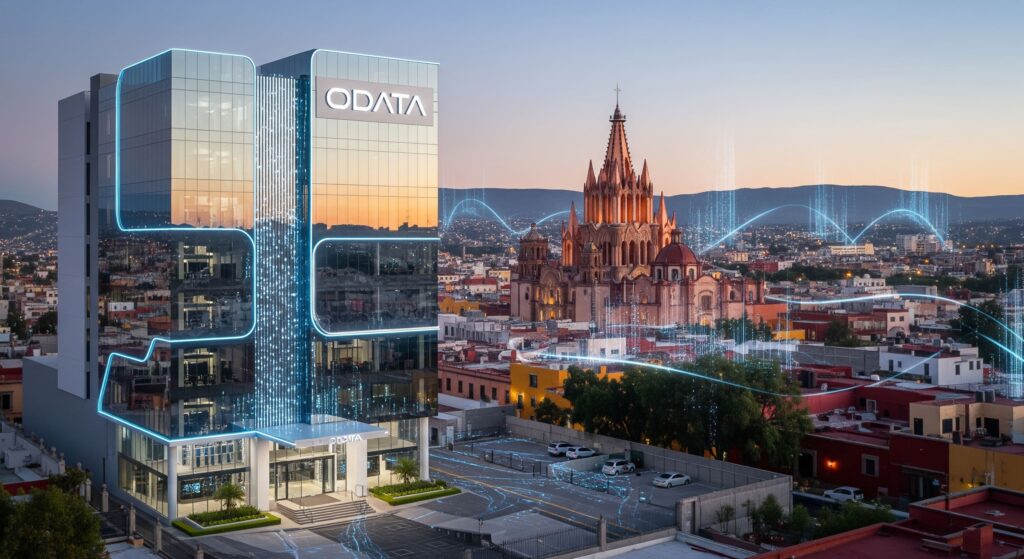Mexico’s Tech Future
OData, part of the Brazilian data‑center operator ODATA (Aligned Data Centers), has inaugurated its fourth data center in Mexico, this time in San Miguel de Allende (SMA), Guanajuato. Dubbed QR04, the campus sits within the SMA Industrial Park, strategically close to ODATA’s three other centers in Querétaro.
At the inauguration, Guanajuato’s Deputy Economy Minister, Luis Andrés Álvarez Aranda, expressed aspiration for SMA to become “the next Virginia or Arizona” of data centers—a clear nod to the region’s ambitions to emerge as a technological and cloud infrastructure hub.
Mexico’s Data‑Center Boom and Strategic Advantage
Rapid Market Growth
The Mexico data‑center market is expanding rapidly, valued at USD 1.06 billion in 2024, with projections to more than double to USD 2.27 billion by 2030, at a CAGR of ~13.5%. Another analysis places the broader data‑center network infrastructure market at USD 5.18 billion in 2023, with forecasts reaching USD 8.92 billion by 2030.
Power Infrastructure & Federal Support
The data‑center power market in Mexico is estimated at USD 468.9 million in 2025, expected to grow to USD 660.7 million by 2030 (CAGR of 7.1%), fueled by hyperscale demand, AI workloads, and supportive federal incentives.
Strategic Location & Connectivity
Mexico hosts all three major global cloud providers—AWS, Azure, and Google Cloud—underscoring the country’s growing importance as a regional data‑center hub. Ongoing enhancements to connectivity include seven existing submarine cables linking Mexico with the U.S., Latin America, and more—plus four new cables expected online in the next 2–3 years.
Environmental and Regulatory Considerations
Rapid expansion, especially in water‑stressed areas like Querétaro, has raised concerns about data‑center demands on water and power resources. However, Mexico’s energy transformation and commitments to sustainable infrastructure—backed by more than USD 9.2 billion in investments—could mitigate such risks and reinforce long‑term resilience.
Impacts on Fintech and Non‑Bank Financial Services Startups
- Infrastructure Reliability and Scalability: ODATA’s QR04, alongside the growing cluster of data‑centers, offers redundant, local hosting, reducing dependency on distant servers and enhancing latency, uptime, and scalability.
- Lower Costs and Border‑Grade Services: With global players like AWS investing over USD 5 billion in Mexican data centers, local businesses gain access to cloud services at lower cost, reducing the need for in‑house infrastructure.
- Tapping into an Underbanked Market: Nearly 66 million Mexicans remain unbanked, as only 49% of adults have a bank account. Fintech firms can serve this population, especially as e‑commerce grows at ~11% annually through 2027.
- Regulatory Momentum and Industry Growth: Latin America’s fintech ecosystem has quadrupled in the last 6 years, and Mexico ranks among the fastest growing; regulatory improvements are a key driver.
- Digital Expansion and Consumer Access: Dependable tech infrastructure ensures fintechs can offer secure, high‑performance platforms for payments, remittances, and credit—boosting adoption among underserved users.
- Nearshoring and LatAm Integration: Near‑shoring trends and cross‑border investments enhance integration with North American markets, offering fintechs a launchpad for regional expansion.
Conclusion
ODATA’s QR04 data‑center in San Miguel de Allende is more than a new facility—it signifies a broader acceleration of Mexico’s digital infrastructure. With robust market growth, international investments, energy modernization, and enhanced connectivity, Mexico is rapidly positioning itself as an ideal environment for fintech and non‑bank financial startups.

